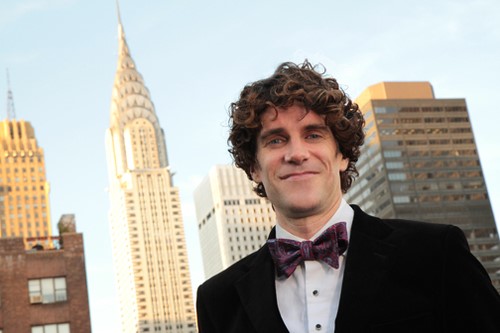Thomas P. Farley

Etiquette expert, speaker and author who’s inspiring audiences to master essential manners for success in the workplace—and in life
Topic Categories:
Fee Range: Contact Speaker Exchange Agency
- Etiquette Expert
- Speaker
- Author
*Fee ranges are presented as a guideline only. Speaker fees are subject to change without notice. For an exact quote, please contact your Speaker Exchange Agency representative.
Mister Manners, Thomas P. Farley is an etiquette expert, speaker and author who’s inspiring audiences of all types to master essential manners for success in the workplace—and in life.
His business etiquette training workshops and keynotes for banks, law firms, universities and Fortune 500 companies are engaging and memorable, offering strategies for getting along and getting ahead. Among his clients have included the United States Department of Commerce, the Estée Lauder Companies, JPMorgan Chase, the Walt Disney Corporation, Wells Fargo, the American Automobile Association (AAA), the U.S. Army, Viacom and New York City’s Economic Development Corporation.
Mr. Farley is a regular and popular guest on the NBC Today show, where he speaks on matters of modern-day etiquette—subjects from “avoiding awkward hugs” to “what not to wear at a company beach outing.” His insights appear regularly in other media outlets as well, including Dr. Oz, the New York Times, the Los Angeles Times, Wired and Money magazines, USA Today, CNN, VH1, ABC and on radio stations across the country.
Throughout 2011, he served as an ongoing host for the daily call-in program Living Today on the Martha Stewart Living Radio network. He also helped launch that channel’s “Manners Monday” segment, which focused on matters of contemporary etiquette. He has been a guest lecturer at New York University’s School of Continuing and Professional Studies, and edited the anthology “Modern Manners: The Thinking Person’s Guide to Social Graces.”
A graduate of New York’s Fordham University, Mr. Farley says these are challenging times for good etiquette: “In this age of constant connectedness and digital distractions, practicing polished manners and remaining attentive is more difficult than ever.” And yet, he explains, “Individuals who make a habit of respecting others and putting people over pixels are the ones who have set themselves apart for success.”
The digital revolution has forever transformed the way we live and work. From smart homes to smart phones, tweeting to telecommuting, fitness trackers to life hackers, no area of our activity is untouched by the new pulse of life in the Internet age. With each successive innovation, society seeks to establish acceptable etiquette. And yet, before definitive answers emerge, a fresh round of tech, each with its own distinct challenges, nips at our heels. Before the culture can determine whether salutations such as “dear” and “good morning” are required when emailing, we’ve already moved on to whether emojis are appropriate in a work text.
With an eye toward proactivity rather than reactivity, “Will You Say Sorry to Your Robot?” takes a look at etiquette for the 2020s. With insight gathered from futurists, scientists and leading ethicists, “Will You Say Sorry to Your Robot?” provides attendees with a peek into their own future as well as the issues that will shape our discussions in years ahead. From self-driving cars to robotic personal assistants, sales meetings conducted via virtual reality to which passenger gets the armrest aboard a crowded Hyperloop tube, these will be the issues of our time during the third decade of the twenty-first century. Get a glimpse of what is to come and give yourself a jump-start on developing best practices for your own behavior—before it’s too late.
Duration: 30 minutes (min); 90 minutes (max)
Ideal Industry Audiences: Technology, Human Resources, Finance, Engineering, Medicine, Legal, Retail, Hospitality, Marketing & Public Relations, Advertising
As the largest sector of the U.S. population, the much-maligned Millennials are on the ascendancy in corporations, giving some members of the generations before them pangs of dread. And though untold Millennials (those born 1982–2000) have proven themselves to be high achievers, stereotypes regarding their sense of entitlement and inability to communicate beyond text messages and Snapchat persist. Baby Boomers, in particular, view the digital natives with disdain. How can these two generations, born as much as forty years apart, begin to see eye to eye? And what role does the current middle child, Generation X (born 1965-1984), have to play in helping bridge the gap?
Our workplaces are far richer when they embrace diversity—including a diversity of ages. To throw in the towel on cooperation—the Boomers clinging to the strains of 1965’s “My Generation” as the Millennials crank up 2013’s “#Selfie”—would mean a missed opportunity of learning and enrichment for all. Not to mention that Generation Z will be the next entrants to the workforce—and they are already promising to bring their own set of challenges. Best everyone get ready.
Duration: 30 minutes (min); 90 minutes (max)
Ideal Industry Audiences: Human Resources, Finance, Publishing, Hospitality, Medicine, Legal, Retail, Advertising
With a mere seven seconds to make a first impression, today’s business professional must make every moment count. From eye contact to posture, handshake strength to wardrobe, the elements of one’s personal presentation combine to ensure immediate likability or dislikability; instant memorability or fast forgettability. This session provides a real-time opportunity to practice the best means to network with industry colleagues, vendors and prospective clients.
Audience members will hone their elevator speech, develop new ways of remembering names and polish their “pickup lines” to join conversations already in progress. The keynote will provide strategies for overcoming shyness, making introductions and mastering “The Rule of 7” for engaging the greatest number of new contacts per hour. Once attendees have honed their skills, the room transforms into an actual networking session where the audience puts the techniques and best practices they have just learned to immediate and effective use. After the networking wraps, the keynote concludes with parting advice for how to follow-up after an event and how to continue to feed one’s network so it remains a vibrant one.
Duration (including cocktail or networking reception): 60 minutes (min); 120 minutes (max)
Ideal Industry Audiences: Human Resources, Meeting Planners, Finance, Hospitality, Medicine, Information Technology, Marketing and Public Relations
If your meetings are filled with phrases such as:
- It is What it Is
- Drink the Kool-Aid
- Increase Synergy
- 30,000-Foot View
- At the End of the Day
- Blue-Sky Thinking
- Out of the Box
…then it’s time to hit the reset button on your business lingo. In this interactive keynote, we examine the origin of these and other overused expressions; why we rely on them so heavily; and why it’s time to let them go once and for all.
Focusing on the panopoly of expressions we have to use as alternatives, “Leaving the Box” examines which sayings have lost their resonance and which ones retain it. Also covered are everyday words and abbreviations that even high-ranking executives unknowingly misuse (e.g.: i.e.) as well as the rationale for ridding our emails of apologetic banter such as “I’m just checking in” and value-less adjectives including “very” and “amazing.” Ideal for anyone who prizes the English language (or indeed, anyone who butchers it), this session asks all who attend to leave their jargon at the door and challenges them to depart with a fresh perspective on communicating.
Duration: 30 minutes (min); 90 minutes (max)
Ideal Industry Audiences: Human Resources, Meeting Planners, Finance, Hospitality, Medicine, Information Technology, Publishing, Marketing and Public Relations
In 2016, with the average American dealing with 100 emails daily, innumerous text messages, untold hours per week spent on Facebook and perhaps even more time streaming movies on Netflix, losing practice with everyday social graces is not surprising. We’re reading less—and greeting less. Adding new ways to connect and yet communicating less effectively. “Getting Along & Getting Ahead” is a call to reclaiming proven techniques that help advance our careers. Standing out for all of the right reasons—as one who still practices pleasantry and respect, one who knows when to stow the cellphone and which bread plate is whose at a corporate banquet—is the goal of this session. We’ll talk touches such as thank-you notes and whether they still matter as well as tips for what to wear if you wish to be seen in a certain light. Also: Why being mannerly does not mean becoming a doormat for the microinequities of others.
An inspiring kick-start for anyone just beginning a professional career and a much-needed reminder for those who are more established in their professions, “Getting Along & Getting Ahead” makes the case for bringing gentility, listening and consideration back to the forefront in the American workplace.
Duration: 30 minutes (min); 90 minutes (max)
Ideal Industry Audiences: Human Resources, Meeting Planners, Finance, Hospitality, Medicine, Information Technology, Marketing and Public Relations
Want to bring Thomas P. Farley to your next event? Please tell us a little about your event, and we will get back to you shortly!




